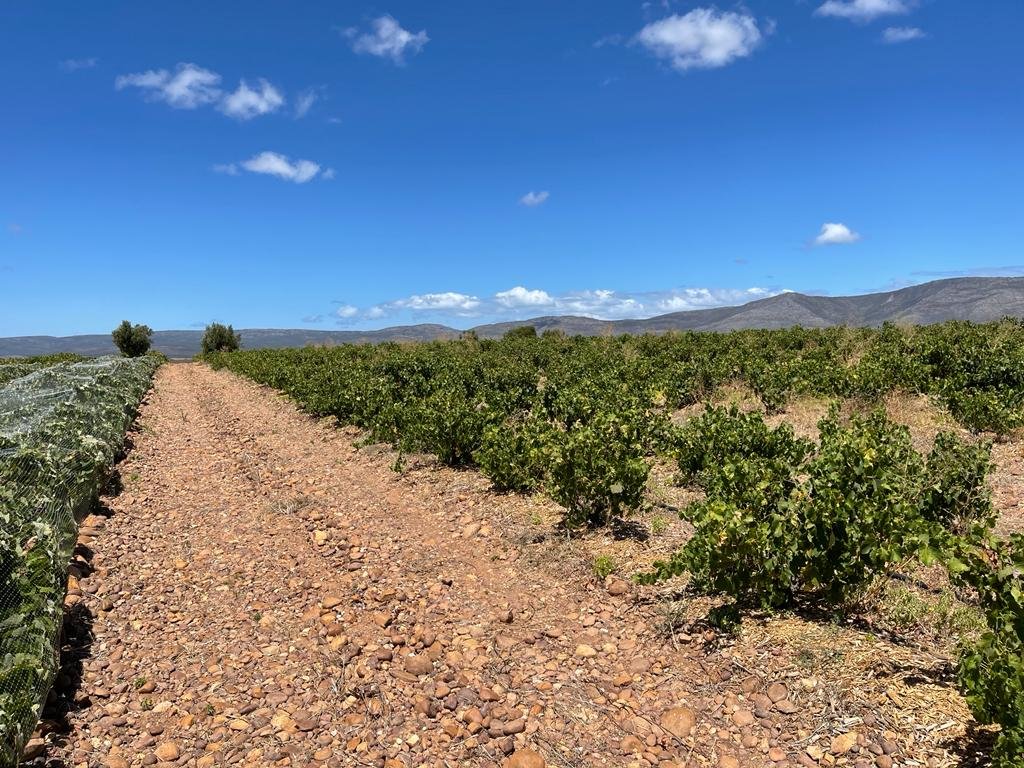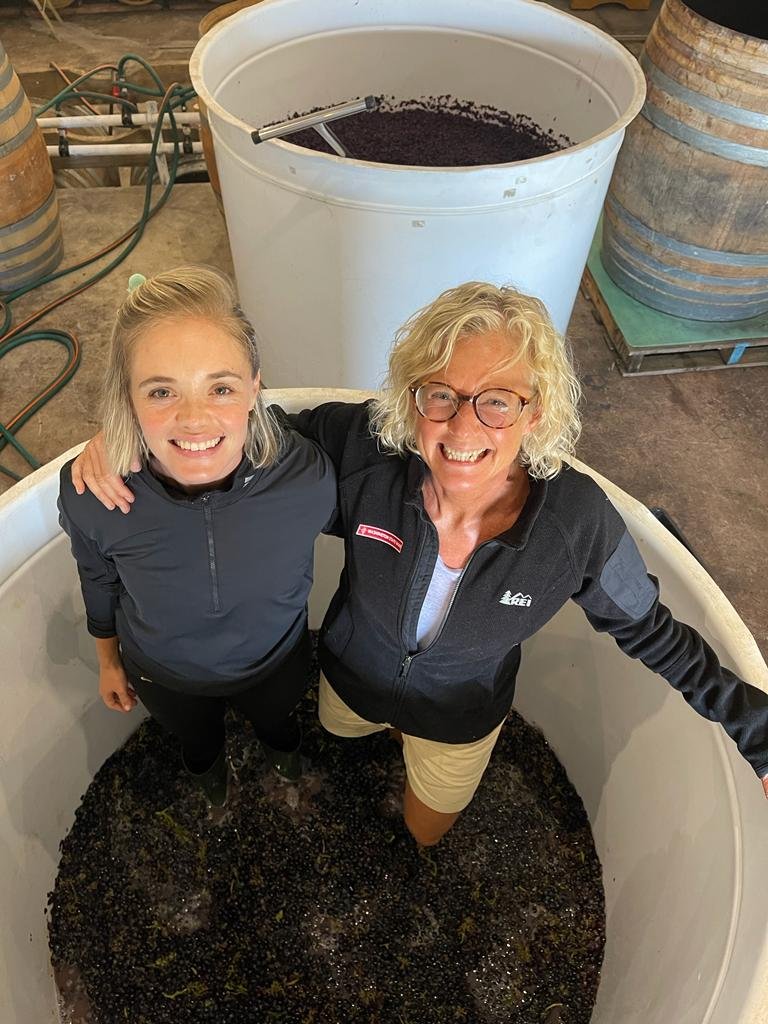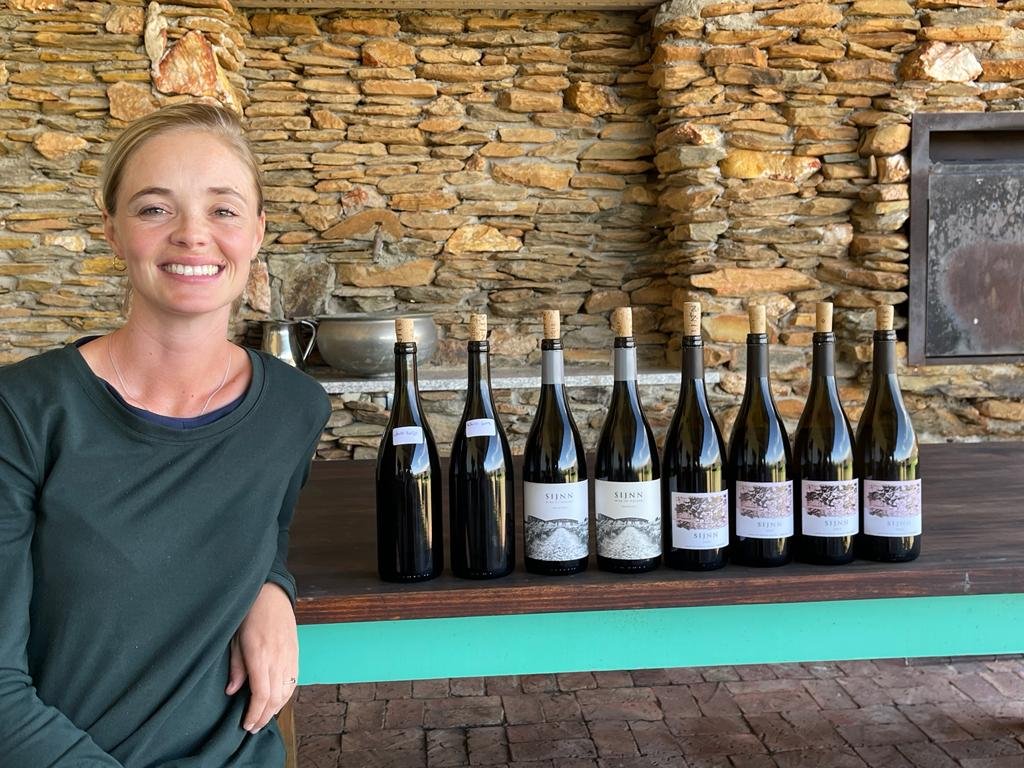Mads MW on De Trafford and Sijnn
Some need to be challenged to be content.

The Thrill Seekers.
Some need to be challenged to be content. Not happy with maintaining the status quo, but requiring a certain amount of struggle to stay motivated. I imagine it as surfers describe their obsession with the sea. Stripping away convention and being forced to survive on your senses alone, anew. They need that suspension, almost like an isolation chamber, to bring clarity, innovation, and inevitably, something totally new. These people are at their best when the stakes are high.
David Trafford might not be the most obvious example of such a person. He does not surf. And yet he combines this reactionary, thrill-seeking element with his quietly, calculating manner, winningly. Under his calm, humble exterior runs an insatiable curiosity. “I didn’t want to die not knowing what wine from Malgas would taste like.”
This passion is what created Sijnn. More than 20 years ago. Not because he was bored making wines from the most inaccessible, highest slopes of Helderberg, but because he simply HAD to know. People like David are pioneers, the ones that make a difference. They push boundaries and discover new terroir.
A One-Woman-Ward
Malgas is a one-woman-ward, a unicorn. Situated far beyond the well-travelled wine routes of the Cape, low-yielding bush vines of mostly Portuguese, Spanish, and Southern France varieties are planted on ancient riverbed soils. With a splash of Bordeaux creeping in through a small section of Cabernet Sauvignon, and Malbec. Because why wouldn´t David be curious to find out how his beloved Cab would respond to being grown in these unique conditions?
Sijnn overlooks the final twists and turns of the Breede River before it reaches the Atlantic 15 km downstream. More a replica of Southern Rhône than what you’d expect to find near the most Southern tip of Africa. Soils which make some of the vineyards producing wines under the official appellation banner of Chateauneuf du Pape blush. There is only one other place in the world where I have seen similar soils, and those are deposited by the Walla Walla River in the Rocks District of Milton-Freewater, on the border of Oregon and Washington. This place is not just special. It is VERY special. A three-hour drive from the slopes of Helderberg and De Trafford. (The OTHER one-man-ward is David Nieuwoudt’s Cederberg, with 5 hours between Cederberg and his other site in Elim. There’s something about the Davids.)
David Trafford, however, has Charla Haasbroek. An extremely talented young woman who accepted the challenge to live and work at the end of a long dirt road, in the middle of nowhere, at the age of 24. Today, 8 vintages later she is going from strength to strength. The happiest of happy moms, juggling two toddlers, hard-working, leading a small team, making wine in a place no one has ever made wine. And yet, with so much passion and heart. Gut feeling is king here. And must be trusted. As there is no one out there that can share the learnings from the past. SHE is the unicorn, bolstered by David’s constant support and passion, to find just WHAT Malgas might bring.
The Ego-less
The absence of ego is palpable in these wines (both De Trafford and Sijnn), founded on a serious investigation into terroir, discovery, and winemaking. Though, when it comes to SELLING wine, understated doesn't always win the race.
Big characters sell wine. Maybe even caricatures of the industry. The showman. The surfer. The bearded wonder. The Hawaiian-shirt. Whether we like to admit it or not, a winemaker’s personality has a strong effect on sales and is one of the best marketing tools for creating a strong brand image. Sometimes so much so that it can put a brand at risk. This is why global brands run by number-crunchers tend to gloss over winemakers in general.
We often miss out on the quiet, hardworking guys who tend to just soldier on without the pomp of their peers. People like David make you sit up and pay attention again. He makes you LISTEN because while the delivery might be quiet, the meaning is often LOUD.
Merlot. The Vilified.
Merlot is not a bad variety. It was deemed so by greedy industry players, who saw its commercial success and decided to plant it EVERYWHERE, irrespective of terroir. Soft, lush, and pleasing, with a great affinity to oak in various forms making it taste like chocolate mousse. For those not considering wine as their alcoholic tipple of choice, this was the ONE. And, with a link to a few of the most expensive wines in the world; Pétrus, Le Pin, and Masseto, to be allowed in the trio of fame, despite its classification not even touching the mid-range of the Italian “quality hierarchy”, it´s easy to smell a cash-cow strategy from afar. Link to the best while dumbing down the consumer. Until they get it, then it´s all over. Merlot. Poor thing.
On top of that, the Chilean industry got it even more beaten up, the world of the wine-enlightened, quite rightly accusing it of being green or cooked. Or both. Simultaneously. Though it was the Carménère masquerading as Merlot and thus picked incorrectly, which led to jarring flavour profiles.
And then, THAT movie killed its last hope of resurrection. A whole nation turned its back on Merlot in favour of Pinot Noir. As prescribed by a made-up character who was neither charming nor authoritative. While Pinot Noir made it through quite winningly, it was worse for poor Merlot. A world-class blending component, but seldom a world-class varietal wine.
Until someone like David Trafford nails it in the Helderberg – quietly, as is his nature. His 2017 vintage might be one of the finest examples out there. With altitude, his best friend against the ever-present threat of global warming, slowly but surely asking Merlot to give way to other more heat, drought, and mildew resistant varieties. But where it’s happy, it captivates all your senses. De Trafford is joining some other excellent examples from producers around the world such as Alois Lageder in Alto Adige, Viña Magaña in Navarra, Huber in the Swiss Ticino, Leonetti in Walla Walla, and Duckhorn in Napa Valley. And in South Africa, De Trafford is joined by Mount Bullet and Carl Schulz’s CWG Hartenberg Merlot which are up there with the best. Most of them are small passionate family wineries fighting for their beloved Merlot. Even in its classic home, more and more producers are favouring Cabernet Franc ahead of Merlot to support its king. Even on the right bank, ever so evident in this current 2021 vintage campaign.
Chateauneuf du Pape? No, Malgas!
Looking for a challenge David? Yep. You´ve got it.
Soils consist of 90% large, round river stones. 350 mm rainfall. In the non-drought years. Nature naturally limits both vigour and yield. Expression of place will always win over quantity. Every time. Winds off the ocean late morning just about every day, especially in summer keeps disease at bay. But the birds ADORE this place. Close to the road, there´s hardly a berry left on the vines. Despite tight bird nets, applied with the greatest precision and secured to the ground with iron-rich, heavy river stones. But birds are smart little creatures. And obviously hungry. Malgas has become a bird haven. THE place to hang around during vintage.
I was lucky enough to spend some weeks at Sijnn during the harvest of 2021 as the world had closed down around me and the Cape Winelands became my saving grace. Tasting every vintage from the first harvest in 2007 for the red, and 2009 for the white was the best way of setting the scene of what this outlier of wards was all about, learning about the decisions made here, and the new learnings gathered along the route of experimentation.
Quality consistency has improved year on year, not only because of learnings gained along the way, but the vines adapting to its unusually challenging location. A challenge during the first years was obviously getting the grapes transported across the Cape, across rugged dirt roads from the one side to the narrow bumpy mountain road ending at the De Trafford’s Helderberg site. A one-liner that says more than a thousand words was the restless query from Duncan Savage’s kids when they were driving down to buy some of Sijnn’s beautiful Touriga Nacional for what became his new label. “Are we there yet?” was born.
For the red, Syrah is the driving force, proving worthy of additional vineyard blocks being planted. But almost 20 years ago, in 2003, Touriga Nacional, Trincadeira, Mourvedre, and Cabernet Sauvignon were also planted. They’ve got some serious vine-age on them now. 10+ years later, in 2015, some other Spanish, and southern French varieties joined the team of outliers. Carignan, Tempranillo, and Malbec were planted, with Grenache showing exceptional potential.
For the white, Chenin Blanc was naturally the leader of the pack, accompanied by Viognier, and Verdelho, of which there should have been more planted as it hits its stride here. They got some characterful company from Roussanne and Vermentino (waiting for a decent crop of Petit Manseng), and waiting to plant Assyrtiko in 2022. Adding to the excitement whole bunch pressing with a new press since 2017 brings a leaner component to the blend. Not strange then that there is excitement in the pipeline for Sijnn.
The road travelled is one of experimentation. I was amazed by the white wine and how incredibly different it is from year to year. I would even dare to say that I do not know of any other white wine in SA which has so much diversity of expression year on year. It is because the constant learnings are so much part of the road forward. It comes with that beautiful challenge of having chosen a place with the most unusual varieties growing in a place where no one has grown grapes or made wine before. That is unique, and what a thrill to be able to learn every year what works even better than last year, and how can it be tweaked for the next vintage, depending on what nature throws at you.
This estate is surprisingly still unknown to most internationally, but more as a result of the humbleness and down-to-earth ‘non-loud’ personalities of the people behind it, rather than lacking something. I am convinced that it is time for them to start banging the drum with great confidence.
In Conclusion
De Trafford and Sijnn represent garagiste-like, handcrafted wines in one of the lowest intervention philosophies around. When other more trendy cool guys or bearded wonders globally show off their amphorae and concrete egg-filled cellars while passionately talking about how the wine makes itself in the cellar, most of the wine geeks out there go wild with excitement for what they have created. Maybe if David took up surfing instead of hiking up the beautiful Helderberg mountain with a handful of dogs climbing every rock like a champion, his wines would end up in the social network flow of many cool dudes and the go-to “wine influencers” of this world.
De Trafford Merlot 2017
A Merlot for Cabernet lovers sets the scene. This 2017 vintage has freshness, elegance, and harmony while still showing its intensity without trying to be showy or big, just naturally built in a serious manner with lots of savoury interest in between the layers expressed, in notes of tobacco and forest floor with impeccable purity and distinction. Fine-grained and firm while not tannic, it certainly got its power to back up the expectations for the future in its very polished structure. Taking a step back on the new oak has definitely benefitted the wine in an even more positive way. It shows development in a way that doesn´t make it feel aged, despite it being 5 years from vintage. This wine will go on and on. To find a comparison globally and style-wise, it´s like a Vega Sicilia-like style way of showing maturity. There´s lots of perfume on this wine as it opens up, a fragrant red fruited prettiness under the surface of all this harmony and savouriness. Polished while maintaining personality and character with that beautiful iron-like rustiness starting to bring the place into the picture. This is a cracker of a Merlot.
N.B. This is NOT an overripe, fruit cake-driven, chocolate-laden overripe Merlot. This is sheer class.
Sijnn White 2019
Chenin Blanc dominated with the Viognier building a connecting bridge without interfering with the small yet important portion of Roussanne and Verdelho.
Floral and bright fruited with great freshness and nerve. Nectarine, clementine with candied pineapple, and a twist of orange zest adding attractive structural dimensions to the excellent chalk-textured silky palate. Lemon verbena and aniseed bring a touch of herbal, savoury spice. Love the contrasts here between freshness and texture. This is not a speed date, this one just grows on you.
The Sijnn wines always show a strong vintage expression, which is one of its real contributions to communicating its individuality. For the white, every vintage from 2017 has made me sit back and think that now she has cracked the code. And every year from here it just gets better.







